Working your core doesn’t have to mean getting down on the ground and doing planks, crunches or sit ups.
There are actually a number of great core-intensive exercises you can do standing. And these Standing Core Exercises can be a great way to work your core in every plane of motion and get in a great full-body workout.
They are some of the best ways to work your core because they work your core in a compound movement instead of simply isolating your abs. That means you can burn more calories in less time and you also strengthen your core in a functional way that helps you lift more and move better in everyday life.
If you are looking to add some variety to your workouts and challenge your core in a new way, try these 20 Standing Core Exercises.
20 Standing Core Exercises
These Standing Core Exercises use everything from your bodyweight to basic equipment like dumbbells and resistance bands and even unconventional tools like the landmine and kettlebell. They are all super core-intensive full-body movements that can be done without getting down on the ground!
Lunge and Reach – This is a great move to work your entire core, including everything from your shoulders to your knees. The lunge portion works your legs as the reach low then high with rotation works your abs, back, shoulders and arms. It is a great functional rotational movement that mimics picking something up on one side of your body and putting it up on something on the other side of your body.
You can do this move holding a dumbbell or simply use bodyweight and focus on moving quicker instead of adding weight.
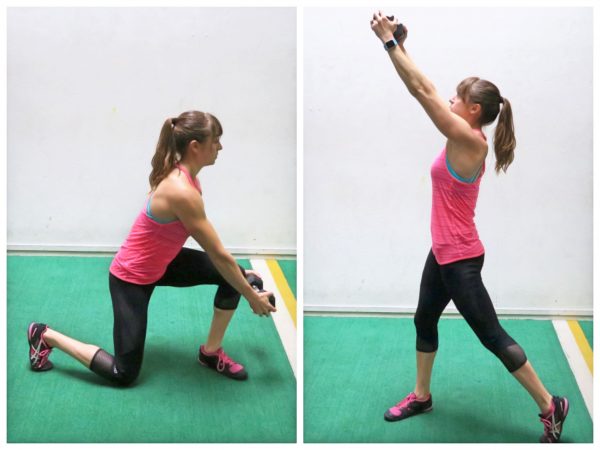
To do the Lunge and Reach, hold a dumbbell (if you use weight) in both hands. Then sink down into a lunge and extend your arms with the dumbbell down outside your front knee. Make sure that as you sink into the lunge you aren’t rounding forward to reach the dumbbell lower toward the ground. Keep your front heel on the ground and your foot slightly turned out.
After lunging and reaching your arms straight down outside your knee, pull the dumbbell in toward your chest as you stand up and pivot toward the opposite side. As you pivot toward the other side, press the dumbbell out and up overhead. Make sure that as you pivot across and up with the weight, you pivot your back leg so that your hip, knee and ankle all extend.
Then lower back down, bringing the weight back down to your chest and then back down outside your knee as you pivot and sink back into a deep lunge. Make sure you pivot to lunge and press. Complete all reps to one side before switching.
Do not round over to reach the weight lower. And when you stand up, make sure to engage your glute and stand tall with the weight pressed up and out.
Squat to Oblique Knee Crunch – The Squat to Oblique Knee Crunch is a great way to strengthen your legs as well as your obliques. And because it is a quick, full-body move, it will also get your blood pumping and heart rate up.
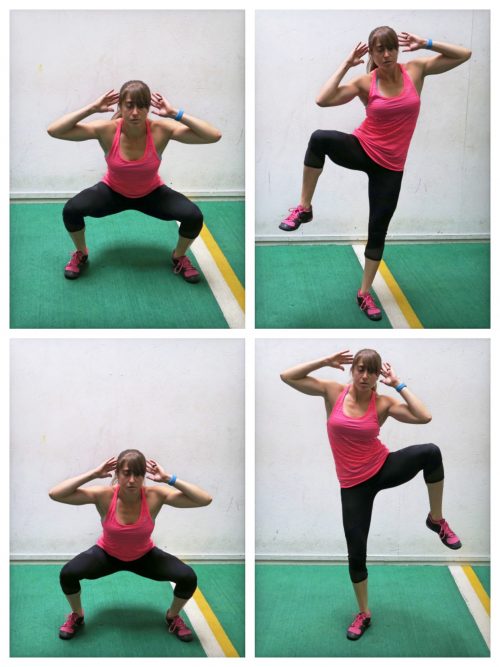
To do the Squat to Oblique Knee Crunch, start standing with your feet about shoulder-width apart. Place your hands up by your head with your elbows out. You can even place your hands behind your head.
Then sit your butt back and squat down, keeping your hands up and your back flat. Do not round forward or let your heels come up. Sink as low as you can.
Driving through your heels, come back up to standing. As you stand up, drive one knee up and out to the side as you crunch your elbow down to met your knee. Feel your obliques work to lift and crunch your knee and elbow together.
After crunching your knee and elbow together, place your foot back down and repeat the squat before performing an oblique knee crunch to the other side. Really focus on crunching your elbow down as you lift your knee up and out to the side. Feel your oblique working and even your quad as you crunch.
Squat with Chest Press – This slow paced squat with chest press will work your shoulders, upper back, abs, glutes and quads. And while it will be tempting to rush through the movement as you fatigue, you will get more out of it if you keep the pace slow.
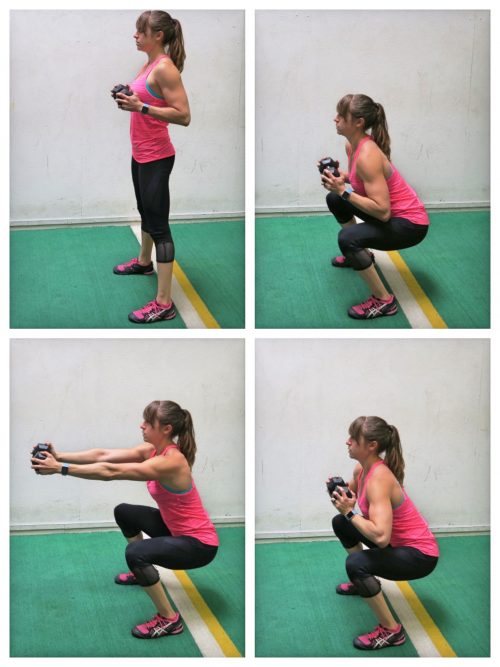
To do the Squat with Chest Press, stand with your feet about shoulder-width apart and a dumbbell, plate weight, sandbag or even a kettlebell held in both hands up at your chest. Do not shrug your shoulders as you hold the weight.
Then squat down, sitting your butt back as you keep your chest up. Sit back in your heels as you squat to parallel or below. Holding this squat, press the weight straight out from your chest. Fully extend your arms without shrugging your shoulders or rounding forward. Stay low and balanced in the squat as you slowly extend then bring the weight back in.
Once the weight is back in at your chest, stand up. Squeeze your glutes at the top and then repeat, sinking back into the squat before pressing the weight back out.
Do not rush this move!
Squat with Rotation – The Squat with Rotation is another great standing core exercise that will really work your legs. It will also work your entire middle, including your abs and the muscles even along your ribs.
Just like with the Squat with Chest Press, you do not want to rush this move as you fatigue. Feel your middle really working as you rotate the weight while staying in the low squat.

To do the Squat with Rotation, hold a weight in both hands. If you keep your arms out straight at shoulder height, this move will work your upper back, shoulders and arms even more. You can also do this with your elbows bent in by your sides and the weight in right above your belly button if you want to focus more on the rotation and less on your upper body. Either way, hold the weight in front of you while standing with your feet between hip-width and shoulder-width apart.
Then sink down into a deep squat, sitting your butt back. Keep your chest up at the bottom of the squat. Then rotate the weight toward one side. Stay low as you rotate. Bring the weight back center and then rotate to the other side.
Bring the weight back center and then stand up before repeating the squat and rotation to each side.
Lunge with Rotation – The Lunge with Rotation is another great rotational exercise to work your core. It is also a great move to really work your glutes. However, you do want to be careful about adding weight slowly so that you make sure your abs are working to control the rotation and not your low back.
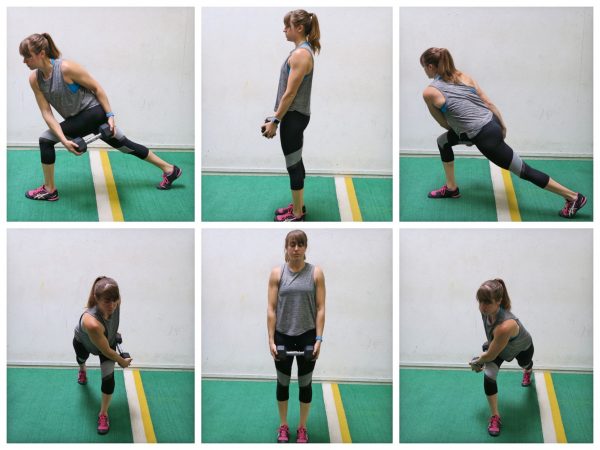
To do the Lunge with Rotation, you can use a dumbbell or even a sandbag. The sandbag will make the move even more challenging because it is an unbalanced, awkward weight. Either way, hold the weight in both hands with your arms hanging straight down in front of you while you stand tall with your feet close together.
Then lunge back with one leg as you rotate the weight down outside your front knee. Bend your front knee as you sit your butt back and perform a straight leg reverse lunge. Hinge over slightly at the hips as you rotate the weight down outside your leg, but do not round forward.
Drive through your front heel to come back up to standing tall as you swing the weight back around front. Really stomp your back foot forward and engage your glutes before lunging back on the other side. As you lunge back, rotate the weight down outside the other leg.
Move quickly rotating the weight from side to side as you lunge. Make sure to really lunge back and sit your butt back and control the weight from swinging and jerking you around.
Alternating Side Taps with Rotation – This is a great rotational exercise to work your core that will really get your blood pumping. This fast-paced side tap with rotation is a great move to include in your cardio workouts that will really work your core and legs!

To do Alternating Side Taps with Rotation, a dumbbell, med ball or sandbag works well. Hold the weight in both hands while standing tall. If using a dumbbell or med ball, you may want to bend your arms and bring the weight right in above your belly button.
Then reach one leg out to the side as you bend the other leg to slightly sit your butt back into a little lunge. Rotate the weight toward the side of the standing leg, but do not round forward. Keep your chest pressed out.
From here, quickly sort of jump and switch into a little lunge on the other side, kicking your other leg out to the side as you bring the other leg in and rotate the weight that way.
Move quickly and keep alternating reaching each foot out to the side as you rotate the weight outside the bent standing leg. Keep your weight pretty centered over your slightly bent standing leg. Rotate quickly from side to side, but don’t let the weight pull you.
Dumbbell Cross-Body Chops – This is a great rotational core move that really gets your glutes working while also really teaching your core to decelerate rotation, which is key to preventing low back injury during rotational movements. Beginners should start with very light weight.
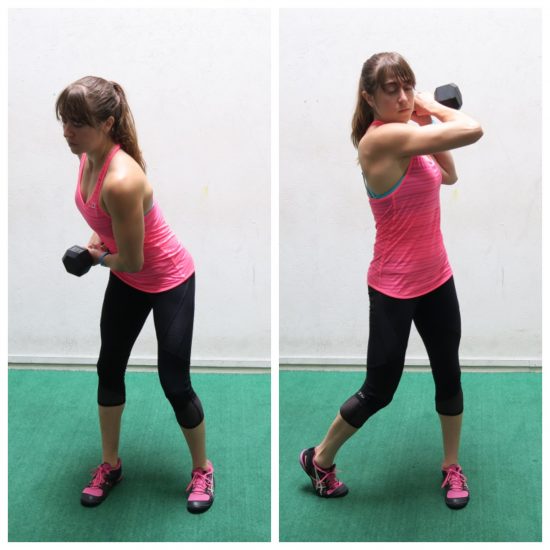
To do Dumbbell Cross-Body Chops, hold a dumbbell vertically in both hands just outside one hip with your arms slightly bent. Your feet should be about hip-width apart. Then hinge over slightly at the hips, pushing your butt back to load your glutes. Keep your chest pressed out and back flat.
From this little hinge, quickly drive your hips forward to swing the dumbbell up and across your body to just over your other shoulder. Use your glutes to power the swing, but feel your core work to decelerate the weight as it reaches your shoulder. You will feel your middle rotate as you swing the weight and the heel on the side the weight started on may come up as you power the swing with your glute.
Squeeze your glutes at the top and then quickly lower the weight back down and across to the outside of your hip. Once you’ve lowered the weight and hinged slightly back over, repeat the chop.
Feel your core brace as you swing and feel your glute power the move. Do not round forward as you hinge or swing the weight. Complete all reps on one side before switching.
Cyclone – This is a great move to build core stability and really work your shoulders and even your calves. Trying to stay balanced as you rotate is challenging with or without a weight!
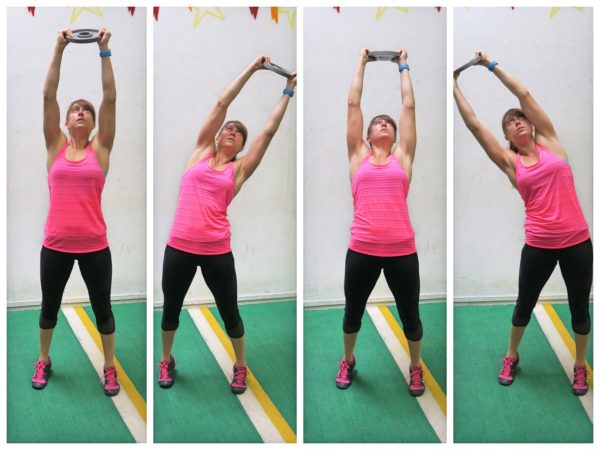
To do the Cyclone, stand with your feet no wider than hip-width apart. Having your feet wider though does help create a more stable base. Then hold a dumbbell or plate weight in both hands and press the weight overhead.
Lift up onto the balls of your feet with the weight pressed overhead and then slowly begin to circle like a cyclone. Make sure to squeeze your glutes as you keep your heels up and circle. The bigger the circle, the harder the move.
Circle one direction at a controlled pace for a set number of reps or for time then switch directions. Make sure you don’t feel your low back when you circle, but instead make sure to brace your abs and squeeze your glutes. Keep your heels up the entire time.
Beginners can start without using a weight or even do this with their feet flat on the ground instead of raising up onto the balls of their feet.
Oblique Jacks – If you’re looking for a cardio move that will really work your obliques, you need to try the Oblique Jacks. This Jumping Jack variation is a great way to get your blood pumping while you feel those sides working!

To do Oblique Jacks, start standing with your hands up by your head and elbows at about shoulder height. Then bring your right knee up and out to the side as you crunch your upper body to the side, dropping your right elbow toward your right knee.
Quickly lower your leg back down as you bring your torso back up and then crunch to the other side, driving your knee up as you crunch your elbow down. Lower the leg back down and bring the other knee back up and crunch to that side.
Move as quick as you can back and forth between the sides, crunching your elbow down to your knee as you raise your knee up as high as you can.
Standing Rotational March – This bodyweight move is a great rotational move to work your core. It is basically a standing variation of the bicycle crunch and will really work your obliques. If you move quickly, it can even be a great cardio exercise!
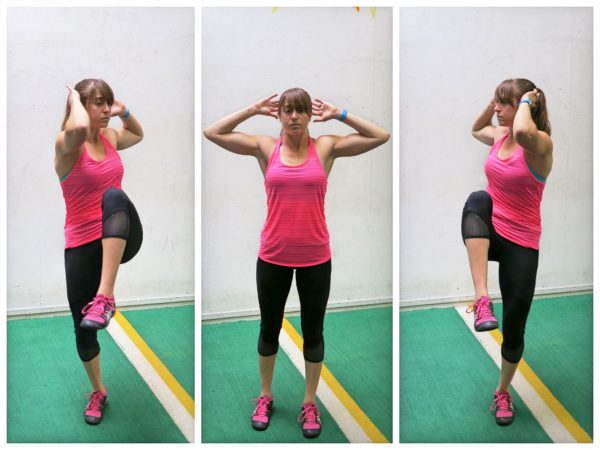
To do the Standing Rotational March, stand tall and place your fingertips lightly behind your head with your elbows open out to the sides. Do not pull on your head.
March one knee up and as you do, twist your core to rotate your elbow toward your knee. Don’t round way forward to crunch your elbow toward your knee. Draw them as close together as you can then lower the leg back down as you come back up nice and tall.
March the other knee up and twist the opposite elbow toward your knee. You may slightly crunch your upper body to reach your elbow toward your knee, but do not round over. Also, make sure to keep your elbows wide as you twist. You don’t simply want to flap your arms to bring your elbow and knee together. Feel your core working as you rotate.
Move quickly alternating crunches to each side.
Knees – Knees is another great bodyweight standing core exercise that works your abs, quads and glutes. It can also get your blood pumping if you move quickly to crunch and tuck your knee.
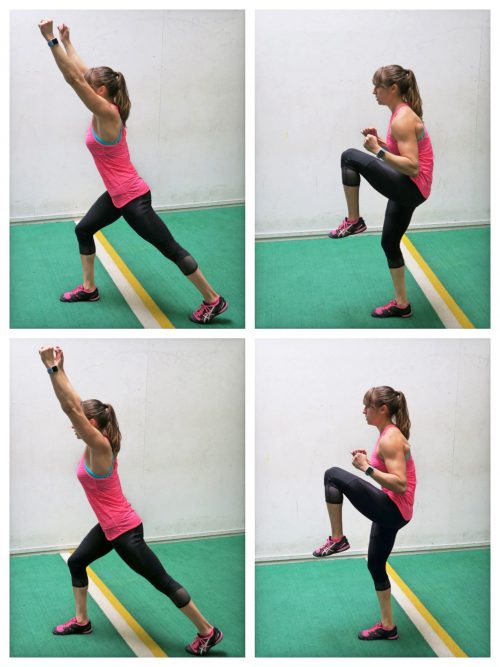
To do Knees, stand tall then lunge back slightly with one foot as you reach your arms up and out. Bend your standing leg and sit your butt back slightly. Make sure you are on the ball of your back foot.
Then driving off your standing heel, tuck your back knee up and in as you crunch your upper body down and drive your elbow to your knees. After crunching over quickly, straighten back up and shoot the leg out and back to tap the ball of your foot back and down.
Reload your standing glute quickly and repeat the knee drive and upper body crunch over. Move quickly while staying balanced. Really focus on tucking your knee up as high as you can as you crunch over and drive your elbows to your knees.
Tap your foot down each time and reach your arms up and out between each crunch. Complete all reps on one side before switching.
To add some variety, and even some weight to this move, try Landmine Knees. Or you can even do a Rotational Knee variation using a light dumbbell.
Skater Hop with Reach – The Skater Hop is a great cardio and glute exercise. It is also a great way to develop lateral power. And when you add in the reach, you not only work your glutes more, but you also make it more challenging for your core. Plus the reach can make it an even more challenging balance move!
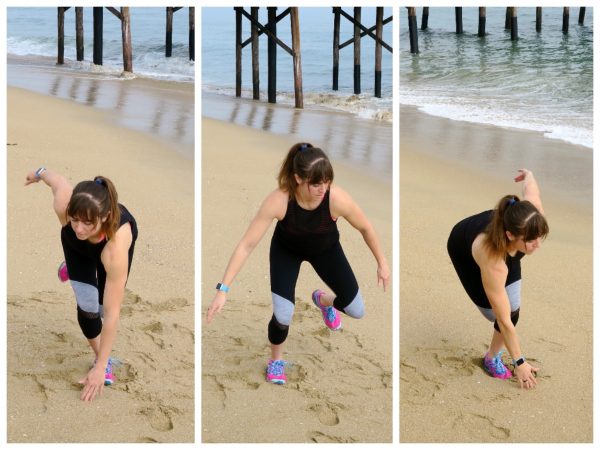
To do the Skater Hop with Reach, start standing to one side of the space you have to use. Stand on your outside foot and shift your weight onto that leg as you sink down into a little squat, pushing your butt back while reaching your opposite arm down in front of you and out to touch the ground right by your standing foot.
Then explode up and off that leg to jump laterally and land on the other foot. Swing your arms across your body to help you jump further to the side. You want to jump as far as you can to the side while still being able to balance when you land.
As you land on that other leg, sink into a slight squat, pushing your butt back so that you load your glute to help you jump back laterally to the starting side. Reach the opposite hand down to touch the ground by your foot. Do not simply round over to touch the ground. Really squat down to help you reach and touch.
Then push off your standing leg and jump back, swinging your arms to help you power the jump. Land on that starting side. Try not to touch the other foot down when you land. Only touch the other foot down if you need to for balance.
Beginners may need to go slower and not jump as far to each side. They may also not be able to reach and touch the ground. Also, if you feel your low back, do not include the reach until your legs get stronger.
Stabilize and touch the ground before jumping back laterally. Jump as far to each side as you can as quickly as possible. Make sure to reach and touch down if you can each time.
Teapots – The kettlebell can be a great tool to work your abs while standing. And one fun oblique exercise you can do using the kettlebell is the Teapot. This may be a small movement, but it will really work your lats, obliques, glutes and even your grip a bit!
And if you don’t have a kettlebell, you can also do this holding a dumbbell or plate weight!

To do Teapots, stand with your feet no wider than hip-width apart. Closer together is even better if you want to really challenge your core. Stand tall, holding a kettlebell in one hand down by your side. Press your chest out and make sure your shoulders aren’t shrugging as you place your other hand on your hip.
Then slowly slide the kettlebell down the side of your leg, letting your other hip pop out slightly as you do. Do not let your chest cave forward. You want to simply hinge to the side.
Once you’ve lowered as far as you can without rounding forward or bending your knees, pull the kettlebell back up and come to standing. Feel your opposite oblique and glute work to pull the kettlebell back up and help you straighten back up to standing. Do not let your opposite heel come up as you lower down and stand back up.
Also, make sure your arm stays straight throughout the entire move. Really feel the opposite oblique work to pull you back up. And make sure you stand all the way up.
Then repeat until all reps are finished on that side.
Windmills – Windmills are another great kettlebell core exercise that really build shoulder and core stability. They will also really work your obliques and your glutes and hamstrings.
Windmills are a difficult move and require a good deal of mobility and stability to complete so make sure to add a load slowly and potentially even start with the Turkish Get Up Hinge!

To do the Windmill with a kettlebell (although you can use a dumbbell), place your hand through the handle and let the weight rest on the back of your forearm. Your feet should be about shoulder-width apart and your front foot (the foot opposite the arm with the weight) should be slightly turned out to about 45 degrees. Straighten the arm with the weight up toward the ceiling.
Keeping your arm with the weight straight up toward the ceiling at all times, hinge over, driving your butt back as you reach your other hand down toward the ground. Slow hinge over as far as you can and feel your core rotate slightly as you drop the hand down as you hinge over, pushing your butt back. You want to load your glutes and even feel your hamstrings. Do not squat although you can allow your knees to bend just slightly.
Then stand back up, keeping the arm with the weight straight up toward the ceiling the entire time. Feel your glutes, hamstrings and obliques working to help pull you back up. Make sure to keep your heels down as you come back up and do not let the weight fall toward the side or your arm bend.
After returning to standing, repeat, hinging back over. You can slightly bend your knees as you do this but do not turn the move into a squat. If you struggle to keep the weight overhead or can’t go all the way down, try balancing something on your knuckles instead or regress to the Turkish Get Up Hinge.
Landmine Rotations – The Landmine is another great tool to work your core while standing. And with Landmine Rotations, you can really target your shoulders, back, abs and glutes. It is a great move if you really want to improve your rotational strength and even your power.
To do Landmine Rotations, hold the barbell in both hands at shoulder height with your feet about hip-width to shoulder-width apart. Press the bar overhead and lock out your arms. The bar will be slightly in front of you.
Keeping your arms straight and your shoulders down (do not shrug), rotate the bar down outside one hip as you pivot your back leg into triple extension. You want to pivot to keep your ankle, knee and hip in alignment and also help power the rotation.
Then, use your glutes to push the weight up from your hip and back overhead as you pivot back center and then over toward the other side, lowering the bar down toward the other hip. Use your glutes and legs to help power the rotation from one hip to the other. Use your abs, back and shoulders to help control the bar and even decelerate it as you lower toward the hip.
Quickly rotate the bar from hip to hip, using your glutes to help power the rotations. Beginners will want to start slower and even pause at the top of the move.
Landmine Rotational Deadlift and Press – If you want to build full-body power and you want to use a barbell, but you want something other than cleans or snatches, the Landmine Rotational Deadlift and Press is a great move to include.
Not only does this move help you build power, but it also helps you build power through numerous planes of motion. It is a great move to develop power in your glutes while also building core and shoulder stability and strength.
I also love this move because it doesn’t require as much complicated technique as cleans and snatches. It is also easier on your wrists and doesn’t require the shoulder mobility that snatches do!
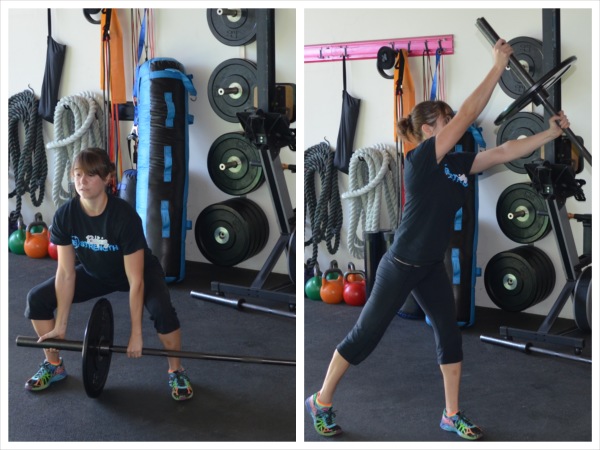
To do the Landmine Rotational Deadlift and Press, stand at the end of the barbell facing the barbell with your side to the Landmine anchor. Grab the barbell with your hand closest to the Landmine in an overhead grip and your hand at the end of the barbell in an underhand grip. Your hands on the barbell should be about shoulder-width apart.
Set so that your feet are just a little wider than shoulder-width and your hands are in between your legs. Sit your butt back and down and press your chest out so that your back is nice and flat as you sink down and hold the bar. You are setting up like you would at the bottom of a normal deadlift except at the end of the bar.
With your arms straight down holding the bar, pull up just slightly so there is tension on the bar before you lift. Make sure to press your chest out and engage the muscles between your shoulder blades.
Then, driving through your heels, quickly stand up out of the deadlift and as you do, pull the bar up and rotate toward the Landmine attachment as you press the bar across and overhead. Your back foot, the foot closest to the end of the barbell, should pivot as you rotate and press across. Use your hips to explosively pull the bar up off the ground and up so that you can rotate and press. You do not want your upper body doing all of the work.
At a controlled pace, bring the bar back down and across as you sink back into a deadlift, pivoting your back foot down. Do not just lean over to bring the barbell back down to the ground. Control the barbell down and sink your butt back down to drop the bar back to the ground.
Then, explosively lift the bar back up and press across. Use your legs to power your press up and across. Complete all reps on one side before switching. Make sure you are using your legs to lift the barbell and not your back. Keep your abs braced and a nice tall posture through the movement. You want to power the deadlift and even the rotational press with your glutes not your low back or simply your arms. Keep the reps low so you can move explosively and work on power. Only add weight if you can continue to move explosively.
Rainbow Slams – The med ball or even a slam ball can be a great tool to really work your core, plus you can use them to get in a great cardio workout as well. With med balls you can do rotational passes, chest passes with side shuffle, overhead throws…You can do these moves alone using a wall or even with a partner. (For more med ball exercises to work your core, check out these 18 Med Ball Moves.)
But picking one great rotational slam ball/med ball standing core exercise you’ve got to do, you’ve got to do Rainbow Slams. This move will get your blood pumping as it works your back, especially your lats, as well as your core and legs. These slams will even work the muscles around your ribs to help build upper body and core stability.
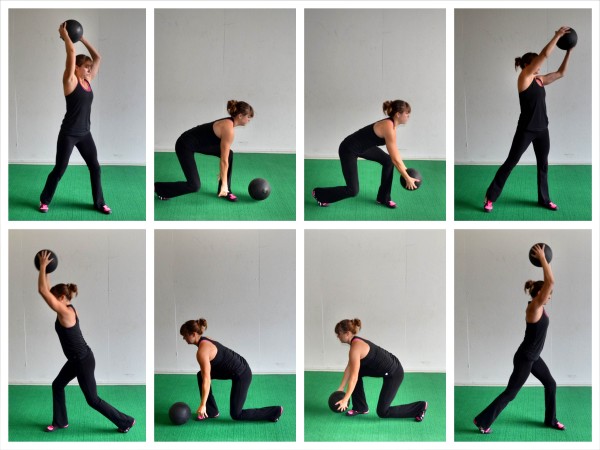
To do Rainbow Slams, hold a slam ball in both hands and stand with your feet about shoulder-width apart. Make sure to use a slam ball or other ball that won’t bounce way back and smack you in the face.
Holding the ball in both hands, raise the ball up overhead, fully extending your arms. Quickly rotate to one side, pivoting your back foot as you slam the ball down just to the side of that front foot. Bend your knees and sink down as you slam. Make sure your front toe is slightly turned out and open as you pivot to that side.
Staying low in the lunve, pick the ball back up. Quickly raise it back overhead as you stand up. Pivot then to the other side and slam the ball down. Make sure again that your front foot is turned slightly open.
Pick the ball back up using your legs and not just your back before standing back up and pivoting back toward the first side to slam. Each time you pick the ball up and stand up to arc it overhead and the slam it back down, you will create a “rainbow” over your body. Make sure to fully extend the ball overhead and not just bring it to your chest or you will not create that arc.
Also make sure to pivot as you rotate from side to side and slam. Don’t forget to use your legs to slam and also to pick up the ball. Don’t stand up and simply lean over, rounding your back to pick up the ball.
Move quickly, alternating sides. Use a light ball to start. It is more important to be explosive with the move than it is to use a heavy weight.
Band Rotations – Resistance Bands are another great way to add resistance and challenge your core during standing core moves. A great core move, especially for anyone that plays a sport like tennis, is the Band Rotations. This move will work your abs, shoulders, upper back, glutes and even your legs.
And while it is a rotational core exercise, it will also really get your blood pumping.

To do Band Rotations, anchor a band at about chest height in front of you and hold a handle in both hands. While facing the anchor point, walk back so that there is tension in the band with your arms extended out in front of you. Stand with your feet about shoulder-width apart and sit your butt back into a little squat. Pull your arms in slightly, bending your elbows just a little.
Then pivot one foot and rotate your hands and the band down toward the other hip. Sit back as you rotate and keep your chest up as you pull the band back toward your hip. Quickly pull it outside your hip then rotate toward the other side, pivoting your other foot to help use your glute to power the rotation.
Pull the band all the way outside the other hip. Do not let the band pull you forward as you rotate. And do not round forward. Sit your butt back and use your glutes to help power the rotation as you keep your chest up and upper back engaged. Pull the band from hip to hip, using your glute to help power the rotation.
Move quickly from side to side without letting the band pull you forward. Beginners will need to go lighter.
Band Woodchoppers – This is another great rotational resistance band move; however, this one isolates each side and can be done as a high to low rotation or a low to high rotation.
It is also a great standing core move to include because it is very functional. If you’ve ever picked something up off the ground or off a shelf and then put it up on something or down on the ground and rotated to place it up or down, you’ve probably done something similar to the Woodchopper.
With both Woodchopper variations, make sure that you don’t round over and that you engage your back to support your shoulders and keep your chest pressed out. Also, make sure that you pivot your feet to help power the rotation with your glutes. And don’t round over. Use your legs and don’t simply lean over and load your low back!
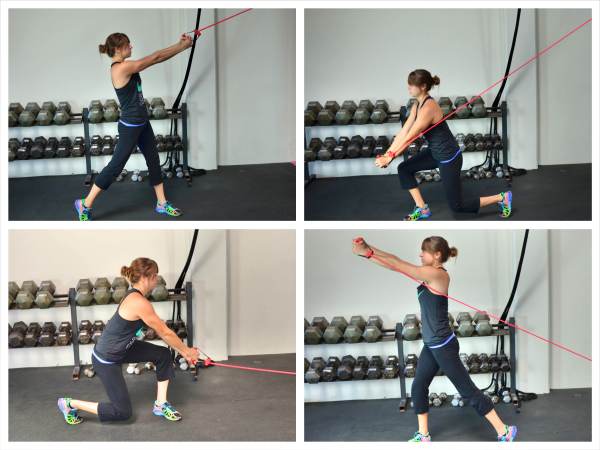
Low-To-High Woodchopper – To do the Low-To-High Woodchoppers, anchor a band down low and grab the handle of the band in both hands. Walk away from the anchor point so that there is tension in the band and set up so that you are standing with your feet about shoulder-width apart and your side to the anchor point.
Then pivot your feet and bend your knees to reach the handle down outside your knee and toward the anchor point; however, make sure there is still tension in the band as you reach toward the anchor point. Sink into a low lunge as you reach and let your arms go straight. Do not round your back to reach lower.
From this position, bring your arms up and across your body as you stand up and pivot toward the opposite side. As you stand up and use your glutes to power the rotation up and across, you should end up pulling the band up to about shoulder height with your arms out straight. Do not reach too high up as you reach across. You do not want to pull it across your neck.
Control the band back down and across as you pivot and bend your knees to lunge back down, reaching toward the anchor point. Move in a slow and controlled fashion to bring your hands down outside your knee. Do not let the band pull you.
Then rotate back up and across. Complete all reps on one side before switching.
High-To-Low Chop – The High-To-Low Chop is just the opposite of the Low-To-High. It is mimicking taking something off the shelf and pivoting to put it down on the ground. This move, you may find, will also really work your lat and upper back and even the muscles around your rib cage.
To do the High-To-Low Chop, anchor the band up high and walk away from the anchor point as you reach back toward it so that there is tension on the band when you set up. You will be standing sideways to the anchor point as you reach your arms up and outside your shoulder toward where the band is anchored. Again, make sure there is tension on the band even with your arms out straight. As you reach, pivot your back foot so that your back leg is in triple extension.
Then pivot and bend your knees to lunge down as you bring the band down and across your body to outside of your opposite knee. Keep your chest pressed out as you rotate and don’t round to reach the band down toward the ground. Just lunge as low as you can and even hinge slightly at the hips to reach lower.
Once you’ve brought the band down outside your knee, you will then pivot back up to standing, bringing the band across your body and up outside your shoulder. Move slowly and make sure there is tension on the band the entire way. Do not let the band whip you back up. Keep your chest up and back engaged. Feel your abs working to stabilize and even your legs working to help you control the move up and also across and down.
Repeat the movement on the same side until all reps are complete.
Band Stability Press – While rotational exercises are great for your core, so are anti-rotational movements. They help you build core stability and they also help you strengthen your body to prevent injury.
If you have ever injured your back because you were twisted in a weird direction or pushed or rotated as you fell, anti-rotational movements can help you build the core stability to prevent that from happening again (or from happening ever).
That is why moves like the Band Stability Press are so important to include. Plus this move really isolates each side to work your shoulders, upper back, obliques, quads and even your glutes!
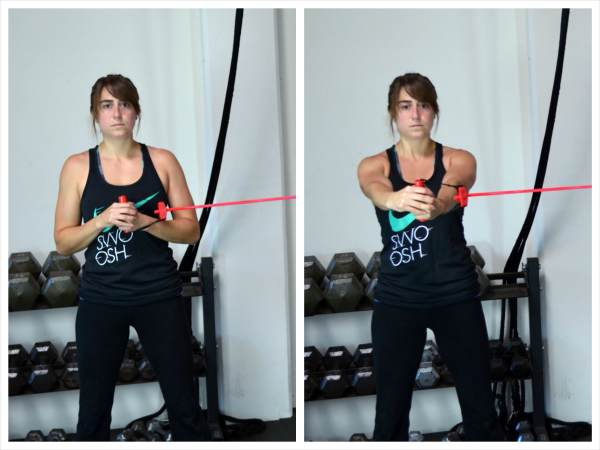
To do the Band Stability Press, anchor a band just below chest height and grab a handle in both hands. With your side to the anchor point, walk away until there is tension on the band. Stand with your feet no more than shoulder-width apart and bring your hands into the center of your chest. To make the move harder, use a heavier band or walk further out. You can also change your stance. The closer your feet are together, the harder the move will be.
With your hands starting in at your chest and your abs brace and glutes engaged, slowly push the band straight out from the center of your chest until your arms are straight out. Do not let your arms rotate open and go back toward the anchor. You want to press straight out. Make sure that as you press your arms straight out and feel your core working to prevent your body from rotating, that you do not shrug your shoulders or round over. Maintain a nice tall posture with your shoulder blades drawn down and back and your abs and glutes engaged so that your low back doesn’t take over.
Then slowly bring your arms back in and repeat the press out. Move slowly to really have to fight the band trying to make you rotate. If you move too quickly, you won’t get as much out of the move. Complete all reps on one side before turning and facing the other way to work the other side.
This move looks easy, but when you try it, you realize how much your entire body fights rotating back toward the band hook. Use a heavier band or step further away from the anchor point to make the move harder. Really make sure to maintain a nice tall posture as you press. Use your back to support your shoulders and feel your glutes, quads, obliques and even the muscles around your ribs work to prevent your body from rotating!
Enjoy these 20 Core Standing Core Exercises and use them to get in a great core workout without ever having to get down on the ground!

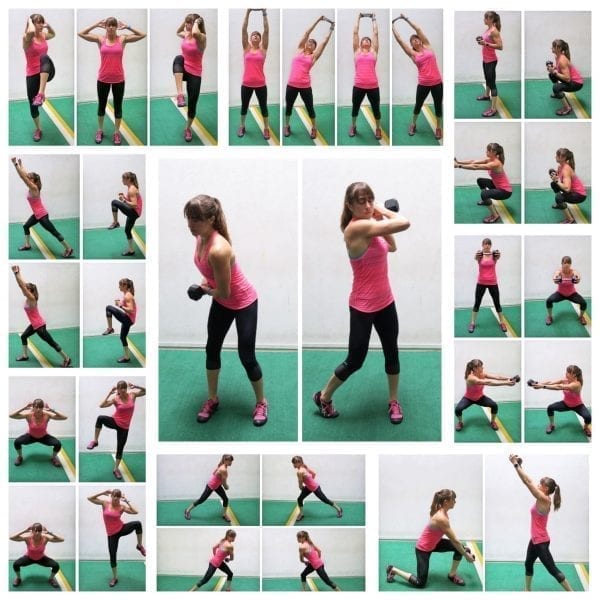
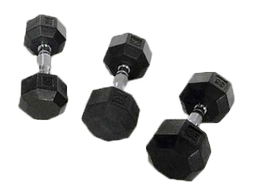

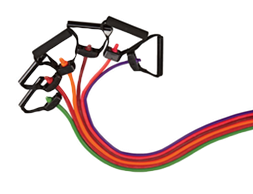
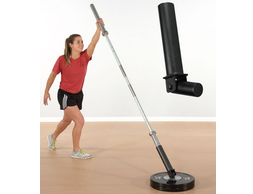


Great core of exercises think I will try them for my warm up before we do Kettle bell class. loved all the differance in each one. I will do a interval of 40 seconds on 10 rest for each one.
thank you for your creativity.
Enjoy!
I have severe arthritis (psoriatic arthritis) in my lower back, hips, knees, and shoulders. Are there core strengthing movements I can do to gently increase my core and balance, and also strengthen my mussels?
Thank you for your help.
I’d recommend you look at a few of my booty burner workouts. They are low impact and will strengthen your glutes and abs 🙂 Also the stability press core move is a great standing core exercise for you!